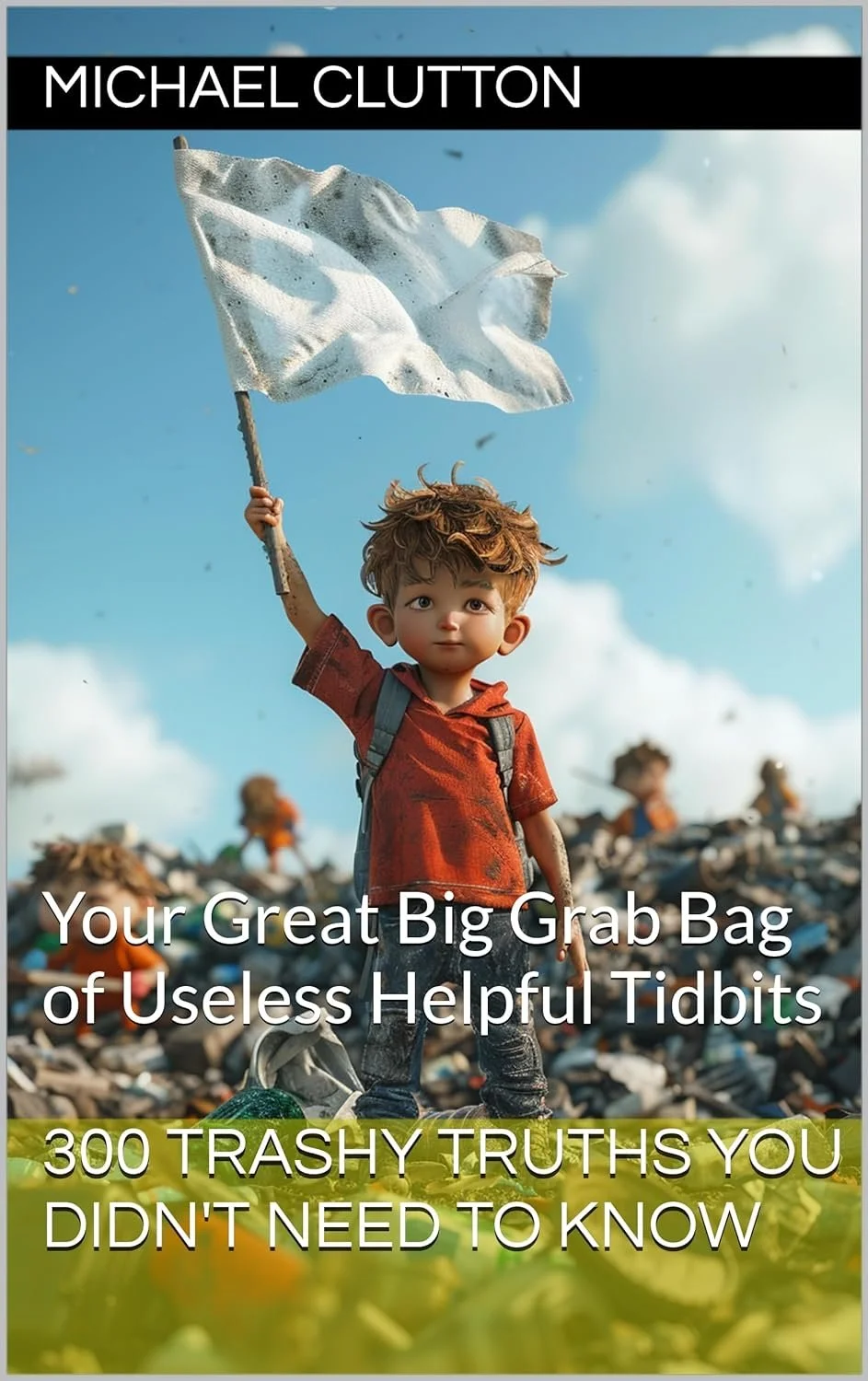
300 Trashy Truths

Return to Booklet Library
300 Trashy Truths You Didn't Need to Know: Your Great Big Grab Bag of Useless Helpful Tidbits
You buy green, sort keen, wash clean, and screen your bin routine—the recycling scene is one mean machine!
In a world where you sort, wash, and bin your garbage only to wonder if it’s all worth it, "300 Trashy Truths You Didn't Need to Know" is your ultimate recycling companion. Perfect for those waiting for their coffee to brew or avoiding another debate about climate change at the dinner table, this book offers a delightful mix of practical insights and entertaining tidbits about recycling.
Packed with 300 amusing and enlightening stats and factoids, this book will take you on a rollercoaster ride through the quirky world of recycling. Discover the weirdest recycling practices, marvel at unusual products made from trash, and learn surprising truths about what really happens to your waste. With a light-hearted, humorous approach, it’s designed to inform and amuse even the most eco-weary reader. And if nothing else, it’s a great way to look busy while you sort through your recycling bin.
SAMPLE
The Journey of Recyclables from Collection to Processing
At MRFs, recyclables undergo several stages of sorting. First, materials are loaded onto conveyor belts where large items like cardboard are removed. Magnets extract metals, air classifiers separate lightweight plastics, and optical scanners identify and sort different types of plastics. The sorted materials are then baled and sold to manufacturers who use them to produce new products. However, the journey doesn’t always end here—some contaminated materials might be diverted to landfills.
The Percentage of Collected Items That Are Successfully Recycled
The success rate of recycling varies widely depending on the material and region. For instance, aluminum and steel have high recycling rates of around 70-90% due to their value and ease of processing. In contrast, plastic recycling rates are significantly lower, with only about 8-9% of all plastic waste recycled globally. Contamination and the lack of market demand for certain materials contribute to these low rates.
SAMPLE
The Confusion Surrounding Recycling Symbols and Labels
Recycling symbols and labels can be misleading. The presence of the recycling symbol doesn’t always mean an item is recyclable. Numbers inside the symbol indicate the type of plastic but don’t guarantee that local facilities can process it. Compostable and biodegradable labels add to the confusion, as these materials require specific conditions to break down and are unsuitable for standard recycling bins.
Grab Bag of Useless Helpful Tidbits
Plastic Bags: Most curbside programs don’t accept plastic bags, which can jam sorting machinery.
Greasy Pizza Boxes: Food residue makes greasy pizza boxes non-recyclable; only clean parts can be recycled.
Shredded Paper: Although paper is recyclable, shredded paper often isn’t due to the small size of the pieces.
Bottle Caps: Small items like bottle caps are usually not recyclable unless attached to the bottle.
Ceramics and Pyrex: These items aren’t recyclable because they have different melting points than standard glass.
SAMPLE
Useless Helpful Tidbit 11: China’s National Sword policy, implemented in 2018, banned the import of 24 types of solid waste, forcing many countries to improve their recycling infrastructure.
Useless Helpful Tidbit 12: In 2019, the world generated about 53.6 million metric tons of e-waste, but only 17.4% was recycled properly.
Useless Helpful Tidbit 13: The United Nations estimates that global electronic waste could increase by 38% between 2020 and 2030, emphasizing the need for better recycling systems.
Useless Helpful Tidbit 14: In 2018, the recycling rate for glass in the European Union was 76%, one of the highest rates for any material.
Useless Helpful Tidbit 15: The implementation of recycling programs in South Korea has led to a recycling rate of 59% for municipal waste, significantly reducing landfill use.
Useless Helpful Tidbit 16: Italy's municipal waste recycling rate is 51.3%, driven by solid regional policies and public awareness campaigns.
Useless Helpful Tidbit 17: To transition to a circular economy, the UK aims to recycle 65% of its municipal waste by 2035.
Useless Helpful Tidbit 18: Norway’s efficient bottle deposit system has led to a recycling rate of over 97% for plastic bottles, setting a global standard.
Useless Helpful Tidbit 19: The National Waste Policy Action Plan aims to achieve an 80% average recovery rate from all waste streams in Australia by 2030.
Great Big Grab Bag of Fun Factoids
Fun Factoid 1: Recycling just one aluminum can saves enough energy to power a television for three hours.
Fun Factoid 2: The global recycling industry is valued at over $500 billion, reflecting its significant economic impact.
Fun Factoid 3: In 2020, the EU recycled nearly 70% of its packaging waste, making it one of the most prosperous regions for recycling efforts.

